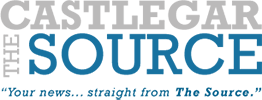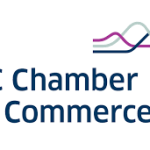MORTGAGE TRENDS: Where are Canadian interest rates heading?
By: Rob McLister, editor of Canadian Mortgage Trends
One could wax on about how grim the United States (US) economy is, but Mark Carney put it succinctly:
“The (U.S.) housing market remains a mess, the consumer is weak, and government actions can be expected to reduce growth…The U.S. economy is close to stall speed…”
That sort of thing puts Canada in a quandary. When the American economy is in the toilet, the Canadian economy is usually on the rim, ready to fall in.
The American Federal Reserve (Fed) itself admits that the U.S. is facing “significant downside risks” and 3 out of 4 Canadian exports go to the States.
The mortgage-relevance here pertains to how America’s woes affect Canadian interest rates. To answer that, let’s first have a look at the historical policy rate differences between the two countries.
Since 2000, when the Bank of Canada (BoC) adopted fixed announcement dates, Canada’s key lending rate has never exceeded 225 basis points above the Fed funds target rate.
At the moment, no reputable economist foresees that level being eclipsed anytime soon. The reason: If the BoC got too aggressive it would drive up the loonie and punish economic growth.
On the other hand, Carney was clear last Tuesday that, “We do not outsource our monetary policy to the U.S. Federal Reserve.” That means the BoC will raise or cut Canadian rates depending on domestic inflation prospects, not what’s happening south of the border.
So where do rates go from here?
At this point, the Fed seems almost impotent in its ability to spur the U.S. economy. Its latest adrenaline shot (a $400 billion bond swap) is likely too small and too drawn out to ignite a recovery. U.S. fiscal restructuring and global economic events (including the Eurozone debacle) will ultimately determine the fate of mortgage rates.
Just for argument sake though, suppose the Fed maintains the status quo on rates until third quarter 2013 (as it forecast). In that case, Canada will be hard pressed to raise rates extensively.
For what it’s worth, here’s what the crystal ball gazers (major economists) are forecasting now:
- 2012 will see 75 bps of hikes (as per the Big 6 banks’ current published forecasts)
- The next rate increase will occur in Q3 2012 (according to the latest Reuters dealer poll)
- 2013 will see rates rise an additional 75 bps (based on the limited number of economic forecasts stretching out that far)
Do not bet the barn that these forecasts won’t change. In fact, don’t even bet the rooster wind vane that sits on top of the barn.
That said, if economists are remotely accurate this time, the above forecasts represent 150 bps of tightening in the next two years.
This implies a 4.50% prime rate by year-end 2013. (The 10-year average of prime is 4.27%.)
Based on the above hypothetical and a properly qualified borrower, the mortgage value zone remains in the 3- and 4-year market. Both of these terms are still available at 2.99% or less and they’ve performed quite well in a variety of our rate simulations.
Conversely, if you’re a little more bearish on the economy and want to speculate on fewer rate hikes through 2013, today’s 2-year fixed at 2.49% is tough to beat.
Even a surprise BoC rate cut (which OIS traders predict in defiance of economists) leaves the 2-year in okay standing. A prime – 0.45% variable may have the edge if rates drop, but the 2-year fixed guards against inflation risk and rate hike potential in 2013. Moreover, you can potentially early renew your 2-year fixed (or lock in a fixed or variable rate elsewhere) up to six money prior to maturity.
Link:

























Comments